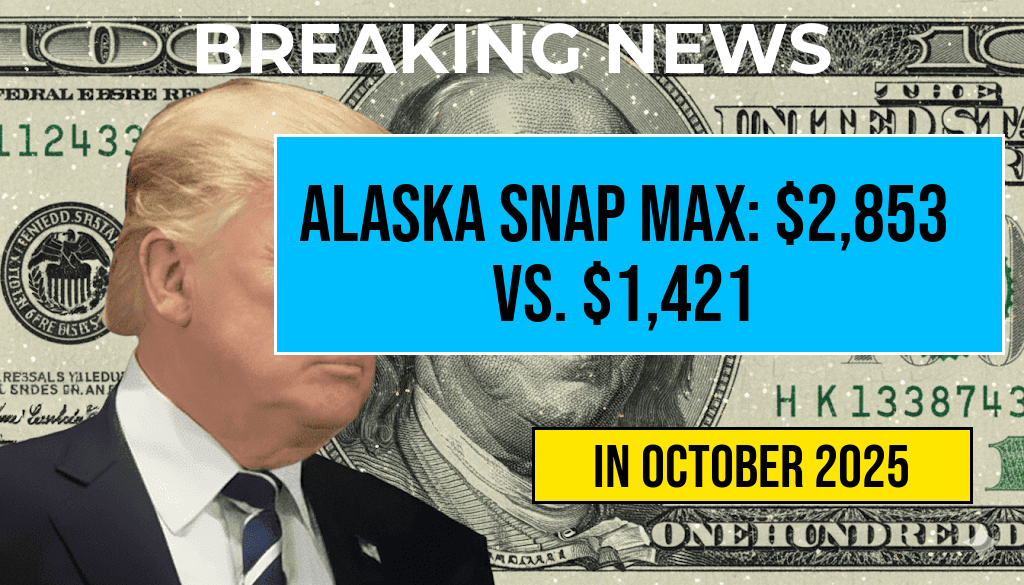Alaska’s Supplemental Nutrition Assistance Program (SNAP) has made headlines recently by increasing the maximum benefit for a family of six to an impressive $2,853 per month. This significant figure starkly contrasts with the $1,421 maximum benefit available to families of the same size in the contiguous United States, commonly referred to as the Lower 48. The disparity highlights the unique challenges faced by Alaskan families, where the cost of living is substantially higher than in many other parts of the country. This article delves into the reasons behind the high SNAP benefits in Alaska and how they relate to the overall cost of living, food prices, and the economic landscape of the state.
Understanding the Cost of Living in Alaska
Alaska is renowned for its breathtaking landscapes and pristine wilderness, but these natural wonders come with a hefty price tag. The state’s geographical isolation contributes significantly to higher costs in various sectors, particularly food. Key factors that influence the cost of living in Alaska include:
- Transportation Costs: Many goods must be shipped from the Lower 48, leading to inflated prices.
- Limited Local Agriculture: Harsh climates restrict local food production, increasing reliance on imports.
- Higher Wages: To attract workers in remote areas, employers often pay higher wages, which can lead to increased prices for services and products.
Food Prices: A Closer Look
Food prices in Alaska are notoriously higher than national averages. According to the U.S. Department of Agriculture (USDA), Alaskan families often pay 30-50% more for groceries compared to families in the Lower 48. This discrepancy is primarily due to:
- Shipping Costs: The majority of food items are transported by air or barge, raising costs significantly.
- Seasonal Availability: Many fresh produce items are only available seasonally, driving prices up during off-seasons.
SNAP Benefits and Economic Impact
The increased SNAP benefits in Alaska are designed to address these unique challenges. The program aims to ensure families can afford nutritious food despite the high costs. Recent changes to SNAP benefits reflect a growing awareness of the economic disparities that exist within the United States. As families navigate a landscape of rising prices, these benefits are essential for food security.
Comparative Analysis of SNAP Benefits
| Family Size | Alaska | Lower 48 |
|---|---|---|
| 1 | $1,184 | $281 |
| 2 | $2,141 | $505 |
| 3 | $2,570 | $769 |
| 4 | $2,853 | $1,074 |
| 5 | $3,206 | $1,372 |
| 6 | $3,579 | $1,421 |
Challenges Facing Alaskan Families
While the SNAP benefits provide crucial support, many families still face significant challenges. The high cost of living can strain budgets, and not all families qualify for SNAP. As the economy continues to evolve, the need for comprehensive support systems that address both food security and overall economic stability becomes increasingly critical.
Looking Ahead
As Alaska navigates the complexities of its economic landscape, the state’s decision to increase SNAP benefits reflects a commitment to supporting its residents. With the ongoing challenges of high living costs, policymakers and advocates are likely to continue pushing for solutions that ensure all families have access to adequate nutrition and support.
For more information on SNAP benefits and their impact, visit the USDA SNAP page or explore the Wikipedia entry on SNAP for a broader understanding of the program’s significance.
Frequently Asked Questions
What is the current maximum SNAP benefit for a family of six in Alaska?
The current maximum SNAP benefit for a family of six in Alaska is $2,853.
How does Alaska’s SNAP benefit compare to the Lower 48 states?
In the Lower 48 states, the maximum SNAP benefit for a family of six is $1,421, which significantly falls short compared to Alaska’s benefits.
Why does Alaska have higher SNAP benefits than other states?
Alaska’s higher SNAP benefits are primarily due to the state’s high cost of living and unique economic conditions that require additional financial support.
What challenges do families face with the SNAP benefits in the Lower 48?
Families in the Lower 48 may struggle with SNAP benefits that do not adequately cover the rising costs of food and living expenses, often resulting in food insecurity.
How can residents in Alaska apply for SNAP benefits?
Residents in Alaska can apply for SNAP benefits through the state’s Department of Health and Social Services, either online or in person at local offices.






